Yet winter seems half weary of its toil
And round the ploughman on the elting soil
Will thread a minutes sunshine wild and warm
Thro the raggd places of the swimming storm
And oft the shepherd in his path will spye
The little daisey in the wet grass lye
That to the peeping sun enlivens gay
Like Labour smiling on an holiday
And where the stunt bank fronts the southern sky
By lanes or brooks where sunbeams love to lye
A cowslip peep will open faintly coy
Soon seen and gatherd by a wandering boy
A tale of spring around the distant haze
Seems muttering pleasures with the lengthening days.
John Clare, (from) March in The Shepherd’s Calendar
March pussy-willow by the Hundred Stream just along the lane, not far from its source.
Lent is a time to grapple with
death and the last things -
those who fall back within sight
of the sun’s return, new shoots blackened by frost -
the fast, the hungry gap. It’s how it hurts
most at the edge, almost there,
the final mile; it’s how the earth labours
at life (once more, once more),
til something green emerges.
And now at last it’s time to look up as the sky
lifts and widens, to venture out in the harsh bright wind,
and see where primroses have colonised
a damp forgotten corner by the wall,
clustered hopeful faces risen through grass …
Hilary Llewellyn Williams, (from) A Kind of Purgatory in The Little Hours
Hedge bank with its primrose constellations, 24 March 2022.
Hello dear readers, and welcome to my newsletter for the new moon in Aries!
This time there are quite a few new subscribers to welcome to our Bracken & Wrack community and so it seems a good time to say how very happy and grateful I am to have your company, whether you are friends old or new. It’s my hope that this rather unruly patchwork of seasonal offerings will not only connect us all here, but also inspire you to deepen your own connection with the whisperings of the land where you live.
Fiery Aries marks the beginning of the astrological year, and as it follows hard on the heels of yesterday’s Spring Equinox, it certainly feels as if the energy is beginning to fizz and that we are tipping over into a shiny new season after the long, hard winter.
A quick word about this newsletter, which seems to have found its own amorphous form, resisting any attempt to make a linear timeline flow through it from beginning to end. Instead, I’m hoping you’ll find it a bit like picking up a pebble on the beach and turning it over and over, seeing different patterns wherever your eye rests and then connecting the images as one thought or memory or remembered snippet of lore leads to another.
In my own mind I feel that we experience life as a spiral which returns to the same place every year as the seasons turn but on a different level each time. So in a sense, you could say that all times are one - or that’s my excuse, anyway! We stoop to smell a cluster of violets and are transported to a March two years ago, or twenty, or are reminded that we plan to make violet tincture at the end of the week once we’ve been to Tesco for a bottle of vodka.
Two March Sunrises
15 March 2021
… The rewards were great. There was no one else on the seafront and I ran down the wooden ramp onto the smooth sand, where the incoming tide was teasing the shoreline and a tiny arc of sun was peeping over the horizon, sending a rose gold line rippling towards my feet. I zigzagged along the beach as the lace-edged waves played tag with me and picked up a hagstone, its circular hole perfectly outlined in white. A window onto other worlds or perhaps, as certain beach wanderers would have it, a refuge for the souls of drowned sailors.
Sunrise and holeystone at Walcott Beach, 15 March 2021
Spring Equinox, 20 March 2022
Are you a dawn blackbird or a stargazing owl?
I can’t tell you how often I try to convince myself to get up really early and go to the beach to see the sun rise over the sea. And I can’t tell you how many times I talk myself out of it when the moment of truth arrives.
This morning I happened to wake up at 5.20am. I could easily have gone back to sleep but an insistent voice told me that here was the perfect opportunity to do exactly what I had been making excuses to myself not to do, time and time again. If I pulled on my clothes and drove to the seafront I could be there just as the sun broke free of the horizon.
I turned over and snuggled up under the duvet.
Ten minutes later I knew what I had to do. After all, it was the spring equinox and this moment of change needed to be acknowledged. There was still time. I dressed swiftly and took the van key from its hook.
As I drew up to the sea front I saw a couple of men ambling towards the beach with large cameras, and a few people wandering around their vans where they had parked for the night. But the beach was a wide, empty expanse, dotted with half-buried pebbles like currants in a hot cross bun. The sand lay pristine, tide-washed, unmarked but for the dancing runes left by the tiny pattering feet of turnstones.
A rosy tint brushed the sky, and I watched it spreading and intensifying moment by moment. Suddenly a glowing crimson globe seemed to lift itself from the waves to hang suspended from an unseen hand.
Under their fiery lantern white horses tossed and reared, galloping to shore and skittering across the sand.
What a gift to have been able to join the gulls this morning to witness this everyday miracle. No wonder they cry with delight day after day after day.
Spring Equinox sunrise, 20 March 2022. The Saharan sand storm that was happening at that time made the colours extra breathtaking.
Lady Day Fair
In medieval times most villages like the little one I live in would have had an annual fair on a favoured Saint’s day. It must have been a spectacle most eagerly awaited. A day off work with the promise of stalls selling foodstuffs and keepsakes and fripperies never encountered in a sleepy rural backwater for the rest of the year. A chance to gossip about the foibles of the rich folk. The smell of ale mixed with roasting meat and exotic spices. The raucous calls of traders peddling their wares. Thin reedy notes of musicians playing for the swaying of the dancing bear. The rhythmic thwack of acrobats’ feet and amazed gasps at their dazzling displays.
I’m sure that many a maiden would wonder whether her favoured swain had picked out a pretty token - a ‘fairing’ - just for her. What memories of spring it would evoke whenever she gazed upon it as the months rolled around.
When I discovered that the old fair here was held on Lady Day, another layer settled itself around the story of the spring candles whose stories I was planning at the time. Lady Day is 25th March, around the time of the Spring Equinox and Easter.
Before the Lost Days of 1752, Lady Day would actually have fallen 13 days later on what is now our 7th April. This has the effect of separating it in time from the Spring Equinox which is, of course, an astronomical event and not tied to our human-made calendars. But still it always fell within the period within which Easter is celebrated, when the air is sweet with the scent of primroses, violets and celandines.
The day on which the angel Gabriel came to tell Mary that she was going to have a baby was, as you would expect, exactly nine months before Christmas Day. What better symbol of new life than green shoots and eggs and tiny lambs?
Stained glass window in St Mary’s church, Wroxham, Norfolk.
Diary of a Candle: Blackbird’s Egg
14 January 2021
Just a muddy rabbit-cropped trackway over the heath, but seeing these dancing horseshoe imprints set me dreaming of stamping and whinnying Romany horses encamped here with their gypsy owners several horse-lifetimes ago.
Archive photograph of a gypsy encampment on the Common in my village, late 19th century.
Long before that, of course, the heather would have been trodden by sturdy Iron Age ponies, their finely-forged horse-furniture glinting in the sun. Further back still, Norfolk’s Bronze Age people favoured the light sandy heathlands for their barrow cemeteries, which may have acted like ancestral hubs for families and travelling groups to circle ceaselessly, living almost like nomads. We know that these far off people had their own horses and wheeled vehicles so perhaps cart tracks drew lines between the birches, gorse and bracken while the bold, shoeless little ponies stepped out strongly.
Dreams, dreams .... and dreams of spring too. I’m remembering the glory of Old Lady Day last year when the gorse next to that same trackway was ablaze and the tops of the distant birches were already veiled in a haze of palest green.
15 January 2021
End of the day. Just me, and the quiet, and the sunset over the heath.
I’ve been on tenterhooks for the last day or two since contacting the potter who made my Owl Flight vessels to ask whether he might be interested in a new project for the Spring Equinox. I wouldn’t let myself count my chickens, but now I can breathe again because he said YES! I’d been dreaming of Romany fortune tellers bound for the Lady Day Fair, and a veil of palest green over the birches, and Bronze Age cart tracks.
Today I sent over some sketches and a tumble of ideas, so the project is just starting to take shape. I’m so excited! Gently gathering the ingredients for a new creation and knowing that spring is on its way.
19 February 2021
My childhood tin tambourine - where the dreaming began? On the heath, here and now.
Golden gorse in a moment of late afternoon sunshine. I’d gone over to the heath for a wander and a think, having had the exciting news that the Spring Equinox candle vessels are glazed and in the kiln! I’m a little nervous too, as I haven’t seen the pots since their final glazing but David did a wonderful job in bringing my Owl Flight vision to life so I have every confidence that they will be exactly as I imagine them to be.
Now it’s up to me to create those final touches that will make The Old Shop’s spring candle for Lady Day as special as I can make it. Up on the heath I felt free for the ideas to percolate while last year’s heather-husks whispered and a buzzard circled overhead.
22 February 2021
On Saturday the message came that the Spring Equinox candle pots were out of the kiln and ready to collect. It was with a mixture of excitement and nerves that I drove the short distance to the pottery in the early spring sunshine, passing the ancient church on a crossroads at the top of the hill that I look forward to seeing whenever I head in that direction. I don’t mind telling you that my heart was beating a little more wildly than usual.
I needn’t have worried. David the potter has again made an amazing job of interpreting my ideas!
23 February 2021
The pottery stamp was made specially for the project and is based on an actual stamp used on early Anglo-Saxon funerary vessels here in Norfolk. It’s thought to represent an unshod horse’s hoof.
Clearly horses were special. Maybe they were seen as being able to travel between the worlds? I love to think of them tossing their manes at the first signs of spring and striking their feet on the bare earth, impatient to kick up their heels.
The horse of our print didn’t wear shoes. You can tell by the triangle at the top, the soft frog that wouldn’t show in the print if its owner were shod. To me this links with those first heady spring days of going barefoot, and with freedom, and also speaks of even older generations of horses on the heath; the ones that frolic across Iron Age coins of the Eceni tribe. Even earlier, sturdy Bronze Age ponies trod the light sandy soils beloved of the barrow-builders.
And while we’re thinking about horses on the heath, let’s not forget those Romany ponies grazing on the gorse.
My Spring Equinox candle bowls carry a ‘magical’ three imprints each. And although they are hooves rather than horseshoes it still seemed a good idea to stamp them with the open end upwards to make sure they hold the luck safely inside.
24 February 2021
Once the bowls are filled with fragrant eco wax you’ll only get a tantalising glimpse of what lies within. But when the Lady Day flame is burned through you will find yourself gazing into an inside-out blackbird’s egg.
26 February 2021
This afternoon I made a pot of strong fragrant tea among the gorse and last year’s heather on the heath. Then I spread out a faded linen cloth, poured the steaming brew into an empty Blackbird’s Egg candle bowl and shuffled my vintage Vandeborre tarot (a 1983 facsimile of a 1762 deck). Of course the card I turned up had to feature a horse!
The golden afternoon would have been enough reason in itself to find that quiet corner for a tea break, but I actually wanted to show you another of the ideas that went into the design of the Spring Equinox candles.
As the sun lowers and the insects start to dance I imagine the gypsies making their camp here in readiness for the annual Lady Day Fair.
Through the rising steam I fancy I catch a glimpse of the fortune teller, who swirls her bone-thin tea cup and turns it upside down. She gazes into my hazel eyes with her blackcurrant ones and proceeds to divine my future from the shapes she sees in the damp leaves. Then her deft fingers shuffle the cards ....
So - that’s why each bowl is shaped like an old flowered china teacup. And when the candle is burned down, I like to think it might offer a moment of contentment as a hot drink is sipped from its speckled depths.
19 March 2021
The last batch has flown away, ready for Lady Day.
St James and the Scallop Shell
St James on the medieval rood screen at St Peter’s Church, Belaugh, Norfolk.
Now that the Equinox and spring’s quickening are with us, the impulse to move, to dance is palpable. And with longer days calling to us to journey a little further, I began thinking about what the word ‘pilgrimage’ means to me.
Here we have lovely St James, who has lived on the painted screen at Belaugh in Norfolk for the past 500 years. He holds his customary scallop shell, the wearing of which on a hat or cloak became an emblem of those away on pilgrimage. Some say that the lines on the shell symbolised the paths from all points of the world to the shrine of St James, and some that it signifies the shape of a sunset at the world’s end - the shrine.
I hadn’t realised until I looked it up that the shell had a practical purpose too, as it could be used as a simple lightweight bowl for eating and drinking on the road, and was also used as a measure and scoop for food donations received along the way. Early upcycling :)
Once at Compostella, scallop shells could be picked up on the nearby shore to take home as mementos, but human nature being what it is, there was also a thriving trade for them in the shops around the shrine :)
Most fabulous of all are the stories telling how St James came to be associated with these shells. One relates how the saint rescued a knight who was clothed from head to foot in scallops; another that a scallop-covered knight and horse mysteriously rose from the waves while the saint’s body was being transported from Jerusalem to Galicia.
Where do you wander when you need spiritual nourishment yourself? Living as I do between the heath and the sea, I’m quite happy with my own patch most of the time. I know that during the pandemic many other people found it nurturing to get to know their own home area more intimately too, its small and sometimes subtle beauties easily overlooked in the rush to spend time in places that are more obviously spectacular.
Can these local wanderings be called pilgrimage? Taken mindfully, I think they can. I’d love to hear about yours.
St James’ Pre-Pilgrimage Porridge
Sunday breakfast with a gale raging outside. It had to be something hot, so I decided to have this quinoa porridge as a change from oats. Then it occurred to me that it would be the perfect pre-pilgrimage breakfast with the inclusion of honey and ginger, both so anti-viral and warming. I’ve tweaked the original Deliciously Ella recipe so I thought I’d share it here in case you’d like to try it too. If you’re a real vegan rather than a wonky one like me you could substitute maple for the honey. St James would probably eat it out of his cockle shell but it also tastes good in a bowl, or even packed up in a jar or tupperware to have cold later, when the winding path seems never-ending. Coincidentally, it’s somehow pleasing that ginger is involved as that was the missing Romany healing food from the last Bracken & Wrack recipe! (If you don’t know about the Five Romany Healers you can read more in But A Wild Mother). Quantities are variable but I usually err on the generous side.
Quinoa grain
Ground ginger
Milk or plant based milk
Honey
Small banana
Sunflower seeds
Goji berries
Milled flaxseed or chia (optional)
Rinse quinoa grain - I don’t measure it but about a cupful - and put into a pan with water just to cover. Add about the same quantity of milk (I use oat or almond) but leave the milk handy for topping up if required. Add ground ginger to taste (anything from a teaspoon to a tablespoon). Bring to the boil and simmer, covered, for 5 - 10 minutes (I go off and do something else!). When the liquid is nearly all absorbed, add a chopped banana and a small handful each of sunflower seeds and goji berries (you could use nuts, raisins etc but this combination is nice). Let cook for another couple of minutes adding more milk if needed. Lastly add a tablespoon of honey and stir. This is the alarming bit as the mixture tends to separate. If you have something like chia seeds or milled flaxseed (I use the latter) stir in a spoonful and all will be well. Otherwise I suggest giving a brisk stir and turning it into your bowl ready to enjoy hot. I have a spoonful of coconut yogurt on top.
I may have made it sound complicated but actually it only takes about 15 minutes start to finish, and I’m not standing over it all the time by any means. It has a taste and texture all its own, unlike anything else I ever have for breakfast. If you try it, do let me know what you think!
A Few Resources
John Clare: The Shepherd’s Calendar, many editions available, 1827.
Hilary Llewellyn-Williams: The Little Hours, Seren Books, 2022.
Gypsy encampment on the Common: image courtesy of www.picture.norfolk.gov.uk
The Old Shop on YouTube: The Old Shop


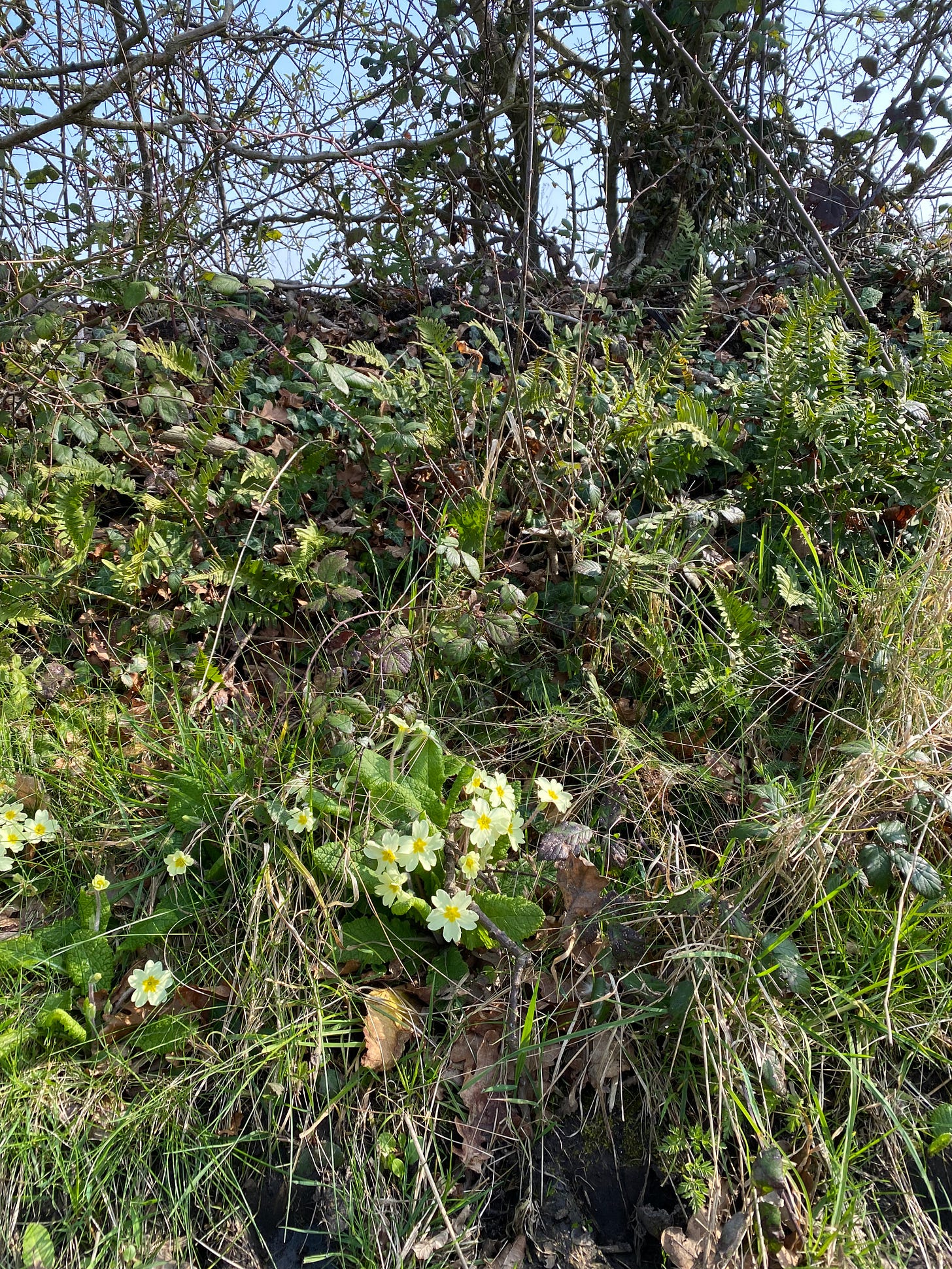

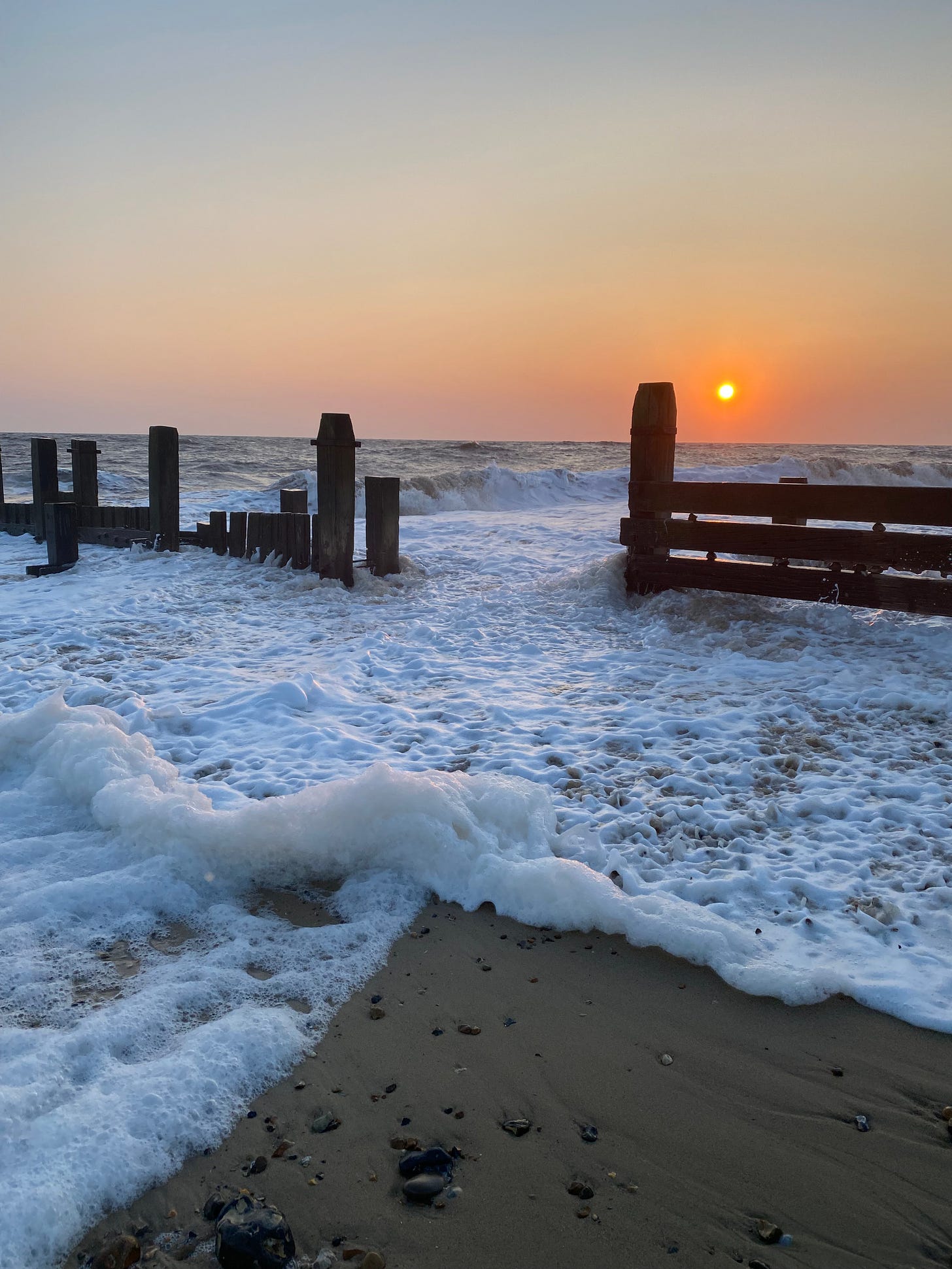
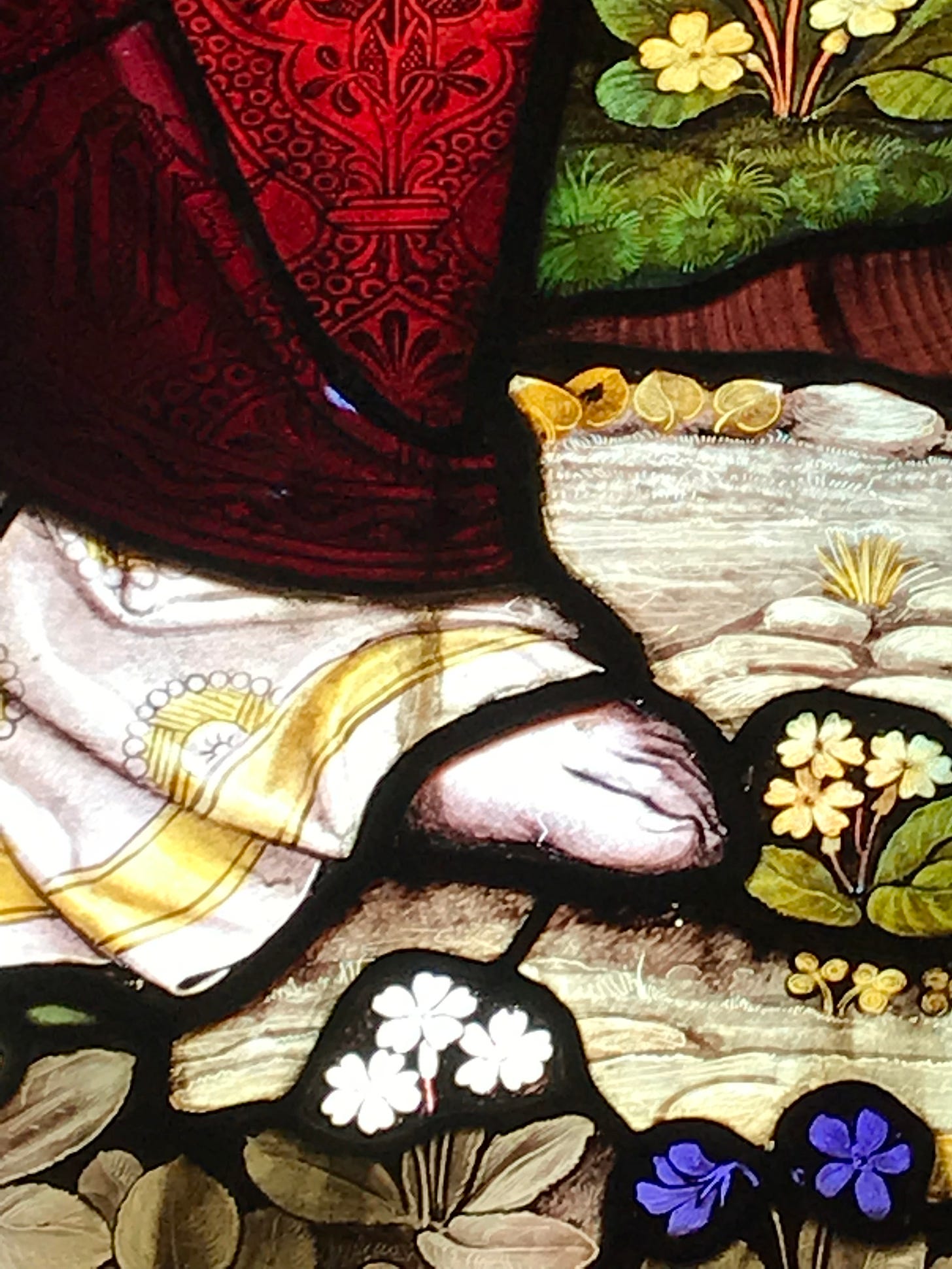
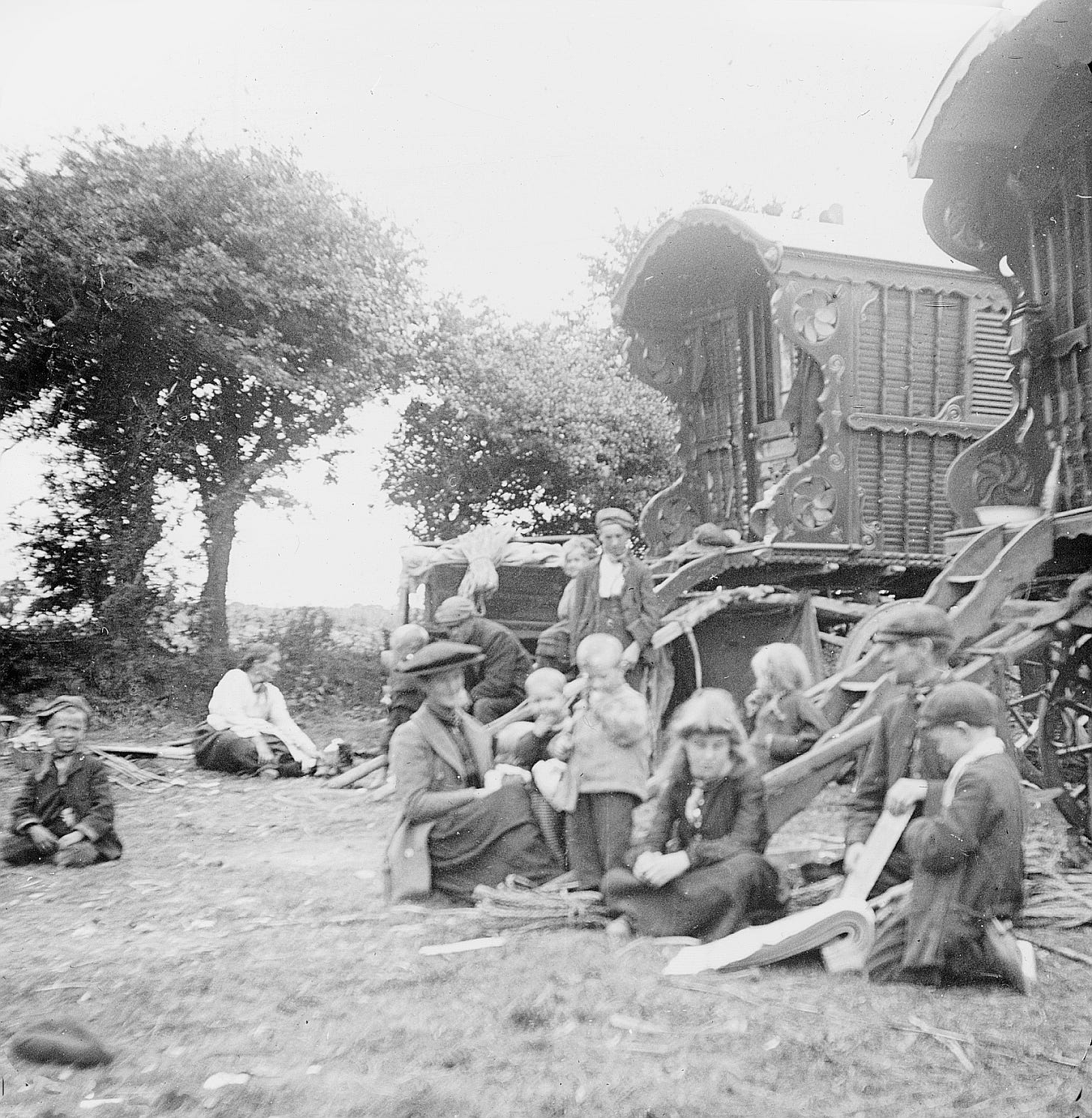

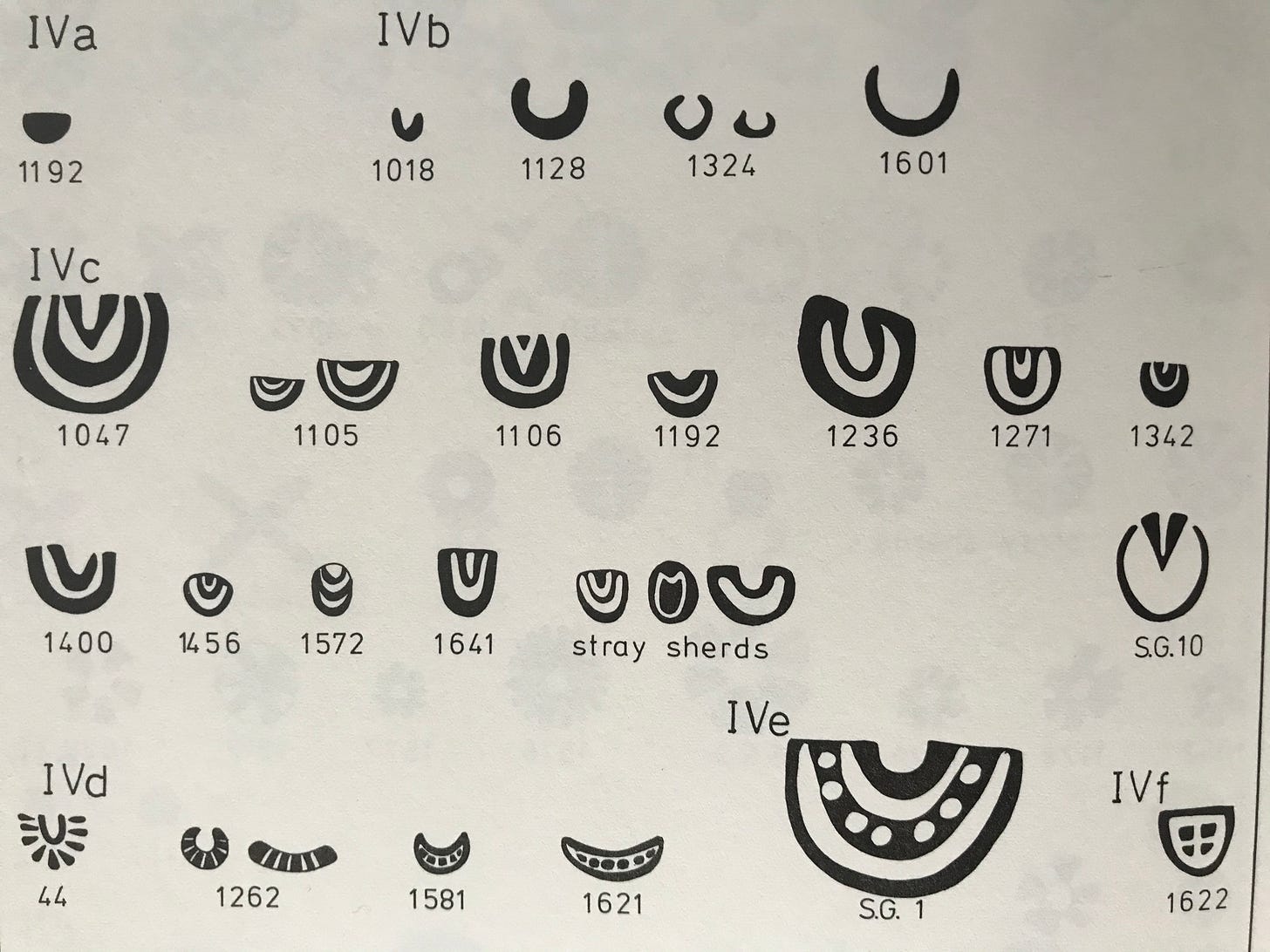


Thank you Imogen for a welcoming newsletter. Your photos were beautiful. Like you, I love to watch the waves “gallop” up the sand. The tide even sounds like horses rushing by. The energy of spring has burst open claiming our senses, forgetting instantly of the sombre gestating days before the light. I found St James and pilgrimage and scallop shells so interesting. Symbolism, historical yet probably just practical! In my late teens I hiked a 50-mile rugged coastal trail for eight days. After the day’s walking our group slept under tarps between beach logs, cooked and ate fresh mussels using the shells as bowls. The shells were as big as your hand. We found driftwood and used them as food platters and steamed fish wrapped in kelp on coals. Wild pilgrimage. I’m enthralled by your candles and the creativity that goes into making them and sending them out. You’ve inspired me to take tea in a flask to my favourite beach. Take care. 🐇🦉
Thank you for that delightful read. The poetry , nature photos ,horse references and amazing history is a wonderful intertwining of thoughts. The beach photos are spectacular and I loved the Gypsy photo their caravans are works of art. We are awaiting Spring here in Manitoba but have been treated to a spectacular Aurora borealis show the last few nights, amazing sunsets and a fascinating crescent moon with Jupiter.
Blessings
Denise xo